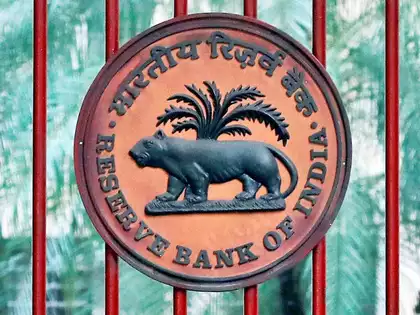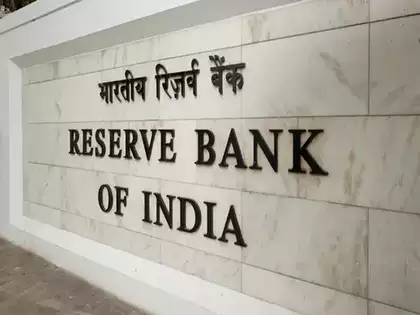Accommodative Policy of MPC
The Reserve Bank of India slashed the repo rate by 25 basis points to 6% on 09/04/2025, with its Monetary Policy Committee voting unanimously to reduce the policy rate.
Repo Rate:Repo Rate is the rate at which RBI lends money to commercial banks.
What are Basis points?
Basis Points are a unit used to describe percentage changes in interest rates and other financial percentages.
- 1 basis point = 0.01%
- So: 25 basis points = 0.25%
The Monetary Policy Committee (MPC) shifted its stance from neutral to accommodative, signaling a focus on supporting economic growth.
What is the Monetary Policy Committee?
- The Monetary Policy Committee (MPC) is a key body of the Reserve Bank of India (RBI)
- Formed under the RBI Act, 1934 (amended in 2016)
Introduced by the Monetary Policy Framework Agreement (2015) between RBI and Government of India - Aimed at achieving inflation targeting (current CPI target: 4% ±2%)
Composition of the Committee:
The MPC has 6 members, divided as:
Three from the RBI:
- Governor of RBI Chairperson of MPC
- Deputy Governor of RBI in charge of monetary policy
- One RBI officer nominated by the Central Board of the RBI
Three external members:
- Appointed by the Central Government
- Experts in economics, banking, finance, or monetary policy
- Hold office for 4 years and not eligible for reappointment
Total = 6 members (3 RBI + 3 Govt appointed
Voting in the Committee
- Each member has one vote
- In case of a tie, the RBI Governor has the casting vote
- Decisions are made by majority vote
The MPC meets at least 4 times a year. As per recent practice, it meets every 2 months (bi-monthly)
What are the Policies that RBI takes?
| Stance | Likely Action | Priority | When it is used |
|---|---|---|---|
| Neutral | Wait and watch | Balanced | Example: Used when inflation is under control but global uncertainties persist. |
| Dovish / Accommodative / Easing | Lower rates | Growth | Used when inflation is within tolerance, but growth is slowing down. Also called a "growth-supportive" or "dovish" stance. |
| Hawkish / Tightening | Raise rates | Inflation control | Seen when inflation crosses RBI’s upper target limit (6%). |

Why did the RBI take this decision?
- Global trade war (due to US tariffs) is impacting economic stability.
- Forecast for India’s GDP growth revised down to 6.5% from 6.7%.
- RBI Governor: Global uncertainty affects investment, spending, and exports.
How this Change in Repo Rate Effects Different Stakeholders?
| Stakeholder | Impact | Detailed Explanation |
|---|---|---|
| 1. Consumers / Borrowers | Positive | When the repo rate is cut, banks reduce their lending rates. This makes home, auto, and education loans cheaper, reducing the EMIs (Equated Monthly Installments). It encourages more borrowing and consumption, which can help boost demand in the economy. Especially beneficial for middle-class households looking for housing or vehicle loans. |
| 2. Banks & Financial Institutions | Mixed | Banks can borrow from the RBI at lower cost, improving liquidity. However, they also face pressure to cut deposit and lending rates, which may shrink their net interest margins (difference between what they earn from loans and pay on deposits). In the long term, if credit offtake increases, profits can recover. |
| 3. Depositors / Savers | Negative | A repo rate cut usually leads to a decrease in deposit interest rates, especially for fixed deposits (FDs) and savings accounts. This hurts retirees, pensioners, and conservative investors who rely on interest income. It may also cause savers to shift towards riskier investment avenues like mutual funds or stocks. |
| 4. Businesses / Corporates / MSMEs | Positive | Lower interest rates reduce the cost of capital for businesses. This makes it easier to borrow for expansion, machinery, or working capital, especially for MSMEs and startups. Sectors like real estate, construction, and auto, which are credit-intensive, benefit the most. This can lead to higher investment and employment generation. |
| 5. Stock Market / Investors | Positive (Short-term) | Lower interest rates improve corporate profit margins, especially for companies with high debt. This improves investor sentiment and can boost stock market indices. Moreover, lower returns on FDs and savings may push investors toward equities for better returns, increasing market participation. |
| 6. Government | Mixed to Positive | A repo rate cut reduces the cost of government borrowing through bonds. This can help in fiscal management and infrastructure spending. However, lower interest rates on small savings schemes (like PPF, NSC) may affect public investment in government-backed instruments, especially from rural and senior populations. |
| 7. Forex / External Sector | Mixed | A rate cut may lead to capital outflows, especially from foreign institutional investors (FIIs) seeking higher returns elsewhere. This can lead to rupee depreciation. However, a weaker rupee might boost exports. But it may also lead to imported inflation (especially oil and electronics), creating trade balance concerns. |
- The repo rate cut means that the standing deposit facility (SDF) under the liquidity adjustment facility (LAF) will stand adjusted to 5.75%, and the marginal standing facility (MSF) rate and the Bank Rate to 6.25%.
| Rate | What It Means | Earlier Rate (before repo cut) | New Rate (after repo cut) | Role in Economy |
|---|---|---|---|---|
| Repo Rate | Rate at which RBI lends to banks (benchmark rate) | 6.25% | 6.00% | Main tool to influence interest rates |
| SDF Rate | Rate at which banks deposit surplus funds with RBI without collateral | 6.00% | 5.75% | Helps RBI absorb excess liquidity |
| MSF Rate | Rate at which banks borrow extra from RBI overnight (when they exceed repo limits) | 6.50% | 6.25% | Penal rate higher than repo |
| Bank Rate | Rate at which RBI lends to commercial banks for long-term needs | 6.50% | 6.25% | Used for long-term lending/penalties |
Why Do all these rates change with the change in Repo Rate?
RBI maintains a "policy rate corridor":
- SDF < Repo < MSF
- The spread is usually +/- 25 bps
So when repo rate changes, RBI adjusts the SDF, MSF, and Bank Rate accordingly to keep this corridor intact.













